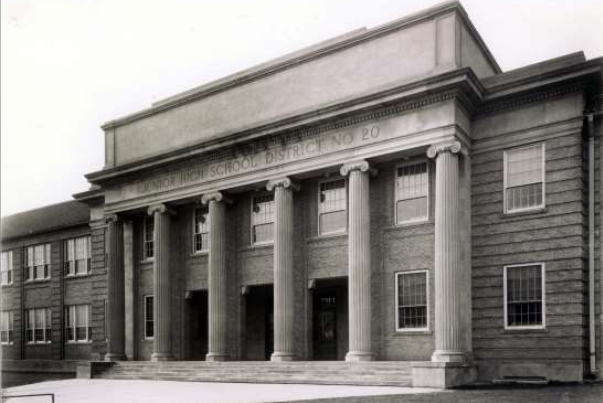
An 1880s church and a classical-revival-style school in Pueblo are among sites benefitting from a project evaluating what hazardous materials are inside them. Both are getting interest from developers that they may not have seen before.
The project, which is winding down later this year, is funded by a three-year $300,000 Environmental Protection Agency Brownfields grant to help boost preservation and redevelopment.
“We're finding a lot of people want to reinvest in Pueblo,” city planner Wade Broadhead said. “One of our strengths, which is our really deep history in our industrial past, is also kind of our liability when it comes to this.”
That’s because developers can have concerns about what environmental problems some properties have and how much it would cost to address them. Broadhead said heavily contaminated areas in the city are mostly dealt with through other EPA and state programs, like the Colorado Smelter Superfund site. But interior contamination like lead or asbestos is pervasive in many old buildings and it slows down prospective re-use.
“You kind of have to pre-habilitate the building first, figure out what the issues are going to be,” he said, “before investors will jump in.”
The city is using the grant to consider the possibilities and challenges at a handful of sites. For example, the funds helped determine what contaminants were inside the nearly century-old Keating School. The results helped secure a different EPA grant that was recently announced, according to Corinne Koehler, who leads the non-profit organization that owns the school,
Koehler said they were awarded $1 million to clean up lead, asbestos and other hazards at the school.
“It really helped us because it's really difficult to raise money for asbestos,” she said, “it doesn't have any glamor to it.”
Once the toxins are removed, Koehler said the organization has a Denver developer lined up to create market-rate apartments in the building. They also expect to renovate and operate the 500-seat auditorium into a multi-use performance space. She said many of the original fixtures and decor are still in place, like the wooden seats, huge windows and antique lighting.
Koehler said she’s spoken with a lot of Puebloans who attended school at Keating and have fond memories formed there.
“It is beautiful,” she said. “So it means a lot to the community to preserve the historic building.”
Koehler said she expects the clean-up work to begin later this year and be complete in 2024.
Investors are also looking at an 1880s church that was part of the project, according to Broadhead. Now that they know what contaminants they need to deal with, he said, it too could be rehabilitated and become apartments.
Another project coming from the EPA funding is creating a master plan to preserve a decommissioned Black Hills power plant near the Historic Arkansas Riverwalk. It is a long-term project, Broadhead said, and the plan provides some initial steps to get started.
The funds are also helping the city evaluate the purchase of the former Spann Elementary School, demolish it and make it part of a potential affordable housing development. The building is located on the east side of town and has been vandalized.








